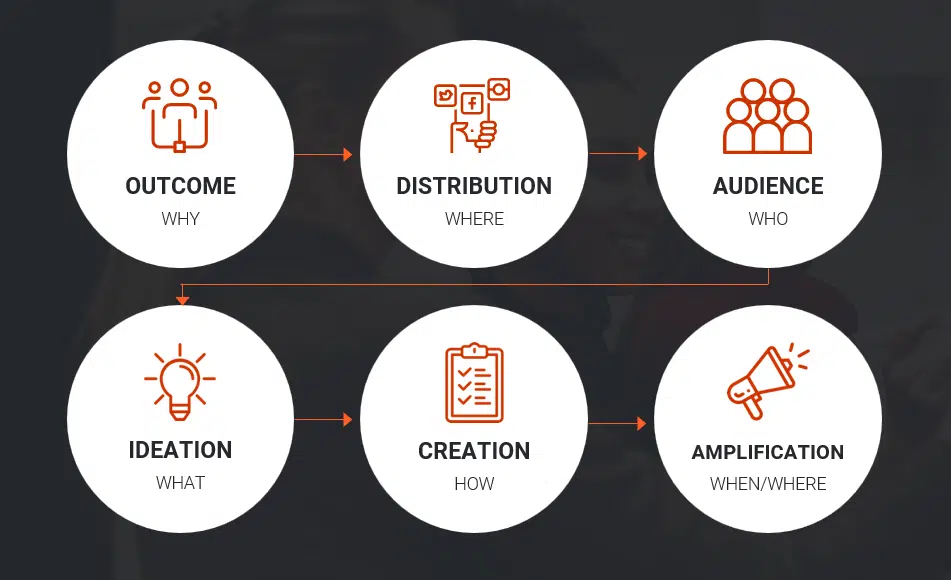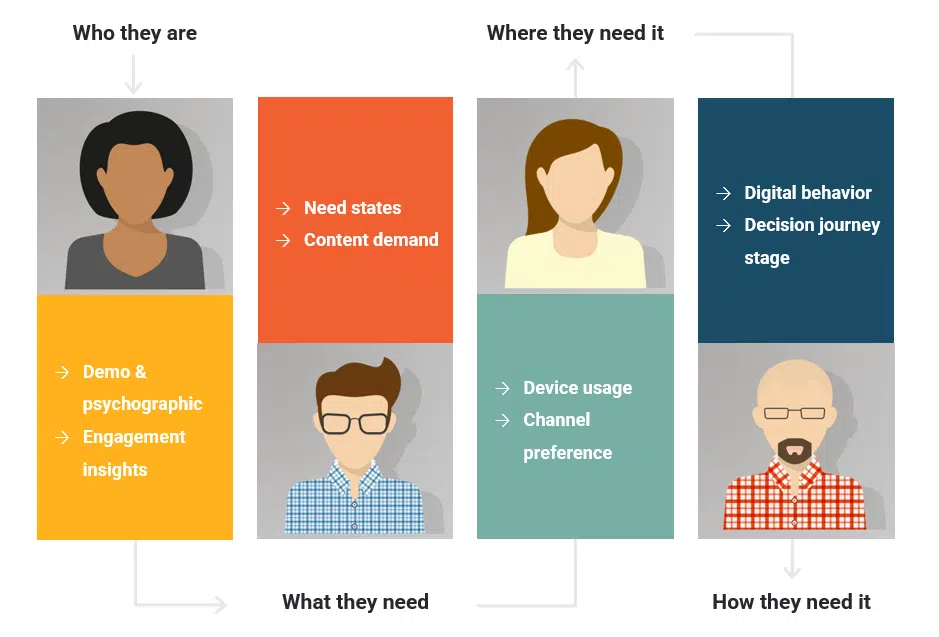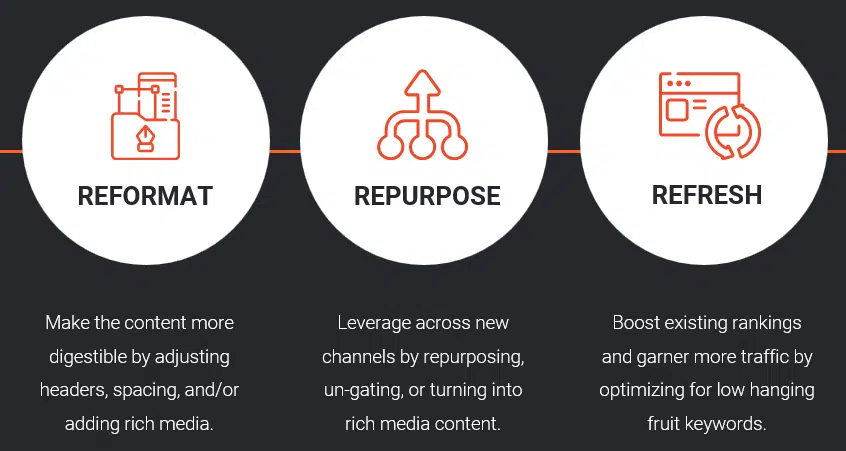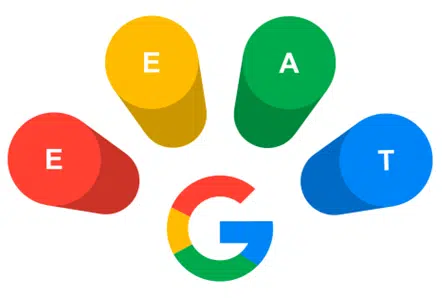If you’ve been following SEO trends over the past two years, you’ve probably heard the term “AI” more than enough times already. While I’ll admit it is getting a tad bit repetitive, it’s not without good reason.
AI technology will set the trajectory of nearly every industry in the modern economy. Some industries are further along the adoption curve than others, but at some point, the world we see today will be seamlessly woven together with AI.
With that imminent future in mind, it’s important to discuss how we use generative AI effectively.
My agency has dealt with clients on both ends of the AI spectrum. Some wish to avoid it in their content production at all costs, while others think it can do everything for them.
Unfortunately, neither is true.
This begs the question, “How should we use AI for our SEO content production?”
Here are six principles to ensure you’re getting the most out of the technology while still producing effective, Google-friendly content.
1. Know your desired outcome

Whether your content is AI or human-drafted, the creation process should always begin with an understanding of why it’s being created.
I’ve encountered a wealth of useless content produced without a real end goal and no connection to a brand’s larger marketing objectives.
With the rapid adoption of AI, the number of brands mass-producing useless content will grow. Some are adopting the mantra of quantity over quality, using AI to simply produce larger volumes of content.
But more content isn’t always the answer if there’s no goal tied to that content.
Different forms of content have different goals, and each and every piece, whether streamlined with AI or not, should serve a purpose and have a supporting strategy.
Here is a breakdown of content types and the strategy behind them:
- Core site content: The goal of this content type is to educate prospective customers about products or services.
- Blogs and informational content: These pieces aim to reach new audiences related to your products or services. A blog topic that’s relevant to your audience, products and services and that has proper promotion behind it can expose your business to new market sectors.
- Shareable content: Use these deliverables as a way to grow authority and reach through backlinks and social engagement. To be effective, this type of content usually approaches a trending topic in your industry from an interesting perspective or shares proprietary data in a unique or fun way.
- Thought leadership content: Leverage this type of content to position a person or brand as a leader or pioneer in their space. You can strengthen the strategy behind this content by including subject matter expert (SME) quotes or interviews.
Dig deeper: AI content creation: A beginner’s guide
2. Leverage audience insights

Your content creation process should always lean heavily on audience research and knowledge. Just as it’s critical to know why you’re creating content, it’s critically as important to think about who you’re creating it for, especially if you’re going to be leveraging AI to help.
Some methods for gaining insight into your audience are:
- On-site surveys
- CRM data
- Data on “most valuable” customers and/or customers with the longest relationship with the brand
- Data on brand new customers (became customers within the last week)
- Data on customers who entered the funnel but did not convert
- Analytics data (audience, demographics)
- Social data
- Client intel
- Survey data of ideal target audiences: Look for commonalities beyond demographics – psychographics
Once you have data points from several areas, you can create a customer persona. This persona is a detailed description of a person who embodies your ideal customer.
Creating this customer profile and keeping it in mind as you write your content serves as a constant reminder of who you’re speaking to, keeping tone and voice accurate and effective.
When leveraging AI, this persona information should be tied directly into your prompts to help ensure the output is less generic and more closely tied to your customer persona.
To integrate your persona attributes with your content even more, you can have AI generate your personas completely. If given the opportunity, this might make more sense.
Most generative AI platforms are designed to comb through vast amounts of data. While crawling these large datasets, the algorithms look for patterns.
If you can work with a more sophisticated platform and feed it as much customer data as you have available, you may be left with a better persona than you ever dreamed of to start.
3. Get a paid account

Privacy and security should be a major consideration for anyone looking to incorporate AI into their daily lives. This is especially true for content creators who want to leverage AI.
As you can see above, knowing your audience and leveraging your proprietary data insights for content production are critical to your content’s performance.
But with the wrong plan type, what you’re inputting into your AI tool of choice could be leveraged as training data and made public. You can get around this by signing up for a plan such as ChatGPT Team, which costs $25/month.
At our agency, before using any AI platform, we thoroughly review the terms and conditions to ensure our use complies with them and that our data – and, by extension, our clients’ data – is not used to train the platform.
Get the daily newsletter search marketers rely on.
4. Don’t expect to find one silver bullet all in one prompt
Contrary to popular belief, there usually isn’t one “holy grail” of a prompt that will get AI to give you the desired results.
For the best results, your team should continuously prompt throughout each stage of your content production process.
The help AI provides may look different at each stage. For example, you can use AI prompts for content to inform your research during the content ideation and outlining process. These platforms can help with research, such as giving lists of keywords and suggesting headings and subheadings that might perform well in the SERPs.
AI can also be helpful at the drafting stage. Starting with your customer persona as an input, query a generative AI platform with an appropriate question for each section of your blog.
The output generated will serve as a great starting point for your writing. However, it’s important to make sure you fact-check and edit that content to give it the ever-necessary “human touch.”
Certain AI platforms, such as Claude and Gemini (from Google), will allow you to upload your outline as part of your prompt. Simply attach your outline file and frame your prompt in a way that instructs your platform to write based on the uploaded file. What you’ll get won’t be perfect, but it will be a solid foundation for you to work from.
What if you’re not generating new content?
If you need to edit and refresh existing content, you can and should still use AI. The right AI platform can trim fluff, bring more clarity to your content and identify what can be added to strengthen your content.
These refreshing tactics could help give your current content the facelift it needs to perform well in this new era of Google AI Overviews.

5. Enhance E-E-A-T

In a nutshell, Google wants to reward content from people who have and demonstrate first-hand subject matter expertise and experience.
Yes, we’re talking about E-E-A-T, which stands for experience, expertise, authoritativeness and trustworthiness.
Many companies are already using generative AI platforms to mass-produce blog content. So E-E-A-T could become even more important as we ride the wave of AI technology.
To set your content apart, and provide a superior user experience to a competitor’s robot ramblings, work with:
Experienced authors
Hire an expert in the field to help with your content production or leverage an expert to review your content. If you work for an agency, ask your clients to provide a dedicated subject matter expert to formally review your content when needed.
If you’re in-house, ask who has the depth and experience needed to weigh in on the subjects you’re covering. You can also develop standard interview questions to ask your client about each topic, ensuring you have a bank of expert insight to improve content performance.
LinkedIn is also a great platform to identify and hire experts within certain fields to help write or professionally review your content.
SMEs
Strengthen your content with SME insights, quotes, resources or statistics.
If you can’t get in direct contact with an in-house SME or one on a client’s team, there are other ways to gain insights and quotes.
You can leverage sites like Connectively (formerly HARO) or respondent.io to farm questions directly from an industry expert. You may have to verify their credentials, but it’s an easy, low-cost way to add depth to your content.
Your client’s YouTube channel (if they have one) can also be a veritable gold mine of quotes.
Data
Leverage custom or proprietary data. Access to unique data in your space positions you with experience that Google will value.
Either internally or using a third-party data collection company, conduct a survey. Brainstorm a unique perspective on topics within your industry and develop a questionnaire.
6. Human touch is essential
AI can help you achieve 60-70% of the goals with specific tasks, but a human touch remains essential throughout the process. Although technology is advancing, glitches like AI hallucinations leave us at a point where a human touch is essential to producing stellar content.
Your aim should be to use AI to set your piece up for success, enhance the content and save yourself some time. But it’s critical to ensure you have the proper staff to check for plagiarism, optimize readability and edit for final spelling and grammar.
The important thing to remember is that AI isn’t perfect. It takes a human hand to oversee content and ensure it hits all the major benchmarks of good internet writing, like E-E-A-T, and polishing the piece to sound conversational, on brand and provide the user experience your readers and the SERPs are after.
Dig deeper: How to survive the search results when you’re using AI tools for content
Take an interest in AI
Keep feeding your interest in AI.
Take it upon yourself to be the AI pro on your team.
AI isn’t going anywhere. It’s growing more intelligent with every passing day.
Stay ahead of AI news and trends, become familiar with new platforms and continue to responsibly explore new and exciting ways to implement AI to transform your workflow.
Opinions expressed in this article are those of the guest author and not necessarily Search Engine Land. Staff authors are listed here.



